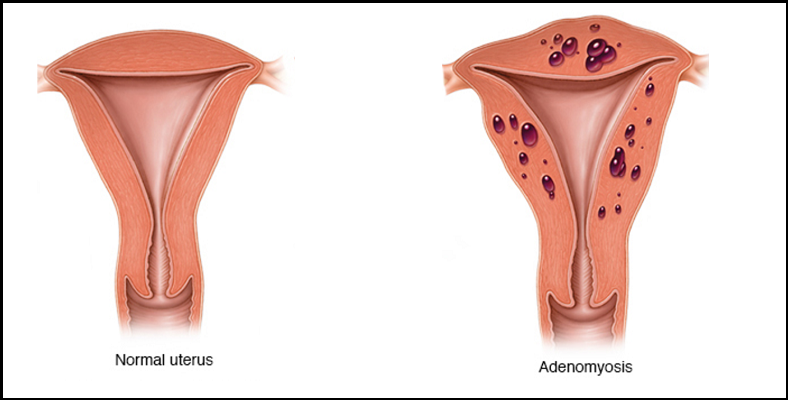
Adenomyosis
- Description
- Faq's
What Is Adenomyosis?
Adenomyosis is a condition in which the inner lining of the uterus (the endometrium) breaks through the muscle wall of the uterus (the myometrium). Adenomyosis can cause menstrual cramps, lower abdominal pressure, and bloating before menstrual periods and can result in heavy periods. The condition can be located throughout the entire uterus or localized in one spot.Though adenomyosis is considered a benign (not life-threatening) condition, the frequent pain and heavy bleeding associated with it can have a negative impact on a woman's quality of life.
What Are the Symptoms of Adenomyosis?
While some women diagnosed with adenomyosis have no symptoms, the disease can cause:
- Heavy, prolonged menstrual bleeding
- Severe menstrual cramps
- Abdominal pressure and bloating
Who Gets Adenomyosis?
Adenomyosis is a common condition. It is most often diagnosed in middle-aged women and women who have had children. Some studies also suggest that women who have had prior uterine surgery may be at risk for adenomyosis.
Though the cause of adenomyosis isn't known, studies have suggested that various hormones -- including estrogen, progesterone, prolactin, and follicle stimulating hormone -- may trigger the condition.
